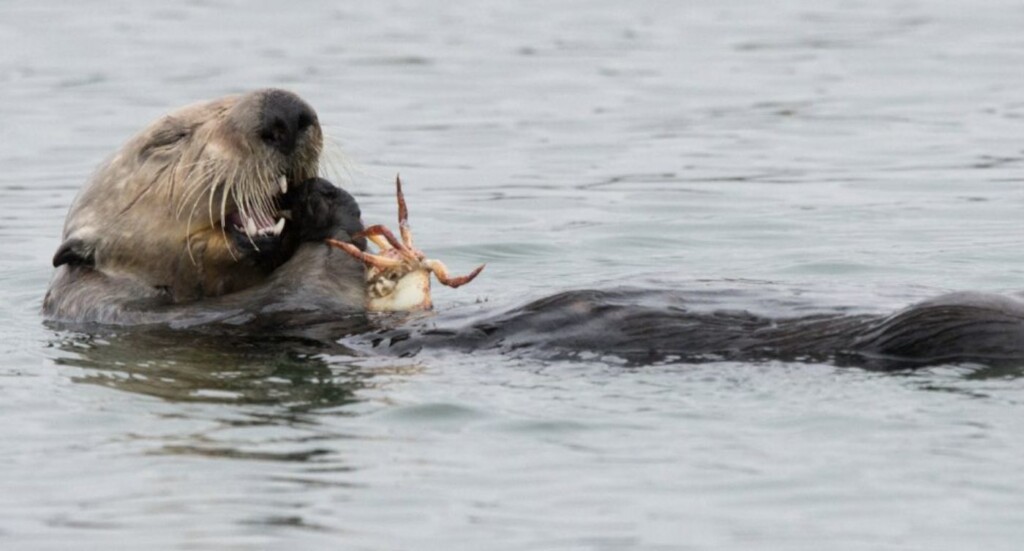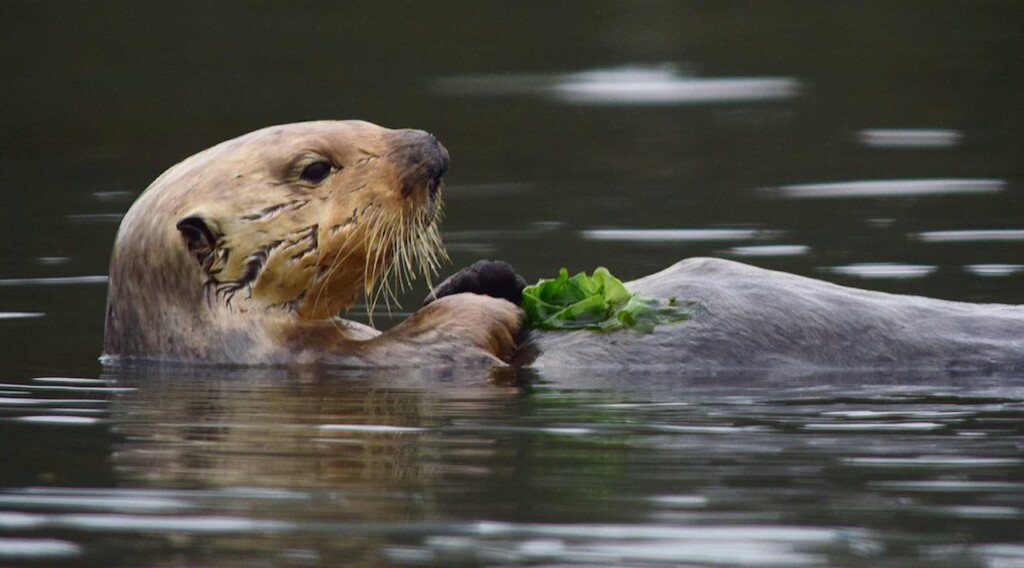
Against all odds, a distressed California coastal ecosystem is on the mend, in large part, thanks to the insatiable appetite sea otters have for crabs.
In a groundbreaking study published this week in Nature, scientists revealed that the return of sea otters to their former habitat in a Central California estuary has slowed erosion of the area’s marsh banks by up to 90%.
The resurgence of these charismatic marine mammals to the salt marshes of Elkhorn Slough in Monterey County sparks hope for improving coastal ecosystems and marks a significant ecological success story.
“Restoring the otter population was achievable without significant effort, and as a result, we are now unlocking several decades of benefits from that one act of conservation,” said Christine Angelini, Ph.D., one of the study’s authors and director of the Center for Coastal Solutions at the University of Florida.
At a time when rising sea levels, elevated fertilizer run-off, and stronger tidal currents should be causing the opposite effect, findings show that erosion has been slashed after reintroducing a top predator—the sea otter—whose insatiable appetite for plant-eating marsh crabs is making the difference.
“It would cost tens of millions of dollars for humans to rebuild these creek banks and restore these marshes. The sea otters are stabilizing them for free, in exchange for an all-you-can-eat crab feast,” said senior author and marine conservation biology professor Brian Silliman, Ph.D. at Duke University.
By documenting for the first time that reintroducing top predators to their former habitat can bring stability to a collapsing ecosystem, researchers wondered if similar results could be achieved in ecosystems worldwide.
IN OTT’ER NEWS: Otter Spotted in Detroit River May be First Sighting in 100 Years

Reintroducing sea otters allowed these ecosystems to restabilize, despite all the other pressures they are subject to, said the study’s lead author Brent Hughes, Ph.D., associate professor of biology at Sonoma State University. “That suggests this could be a very effective and affordable new tool for our conservation toolkit.”
Like many California estuaries, Elkhorn once was a foraging habitat for sea otters, which need to eat the equivalent of about 25% of their body weight every day—around 20 to 25 pounds of food, with crabs being one of their favorite meals.
But after fur traders hunted the local otter population nearly to extinction, the number of crabs exploded over the next century. Crabs eat salt marsh roots, dig into salt marsh soil, and over time can cause a salt marsh to erode and collapse.
Today, years after the otters were recolonized, aerial photography confirmed marshes and creek banks became more stable (despite rising sea levels, increased water flow from inland sources, and greater pollution). Some marshes were even expanding.
ADORABLE OTTERS: Woman and Her Pet Otters Have Spent the Last 40 Years Protecting the Species From Extinction in England
Angelini said that tool is an encouraging sign for her and colleagues as they confront similar threats to Florida’s coastlines from sea level rise, intense storms, and excess nutrients spilling into coastal waters.
“All these challenges can feel unsurmountable,” Angelini said. “This study indicates to us that, if we truly understand the ecosystem and know what levers to pull, we can see significant benefits to the health and stability of these systems.”
WATCH: Amazing Video Shows How Mama Otter Teaches Her Pup to Swim in Dramatic Fashion
The research team conducted large-scale surveys across 13 tidal creeks, as well as small-scale field experiments at five locations around the estuary over a six-year period. Otters were excluded from some test sites but allowed to recolonize others, using a caging system designed by Angelini.
“As a graduate student in biology at UF, I had been setting up these types of cages and manipulating access to predators and their prey in salt marshes all over the Southeastern U.S.,” Angelini explained. “I’ll never forget building all the cages in the parking lot of the estuary out in California. And all these years later, we now see these amazing results.
“It’s an uplifting story about the benefits of conservation and persistent, long-term research.”
Watch an animation of the otters’ effortless work…
FLOAT THIS SWEET NEWS to Nature-Lovers By Sharing on Social Media…




















